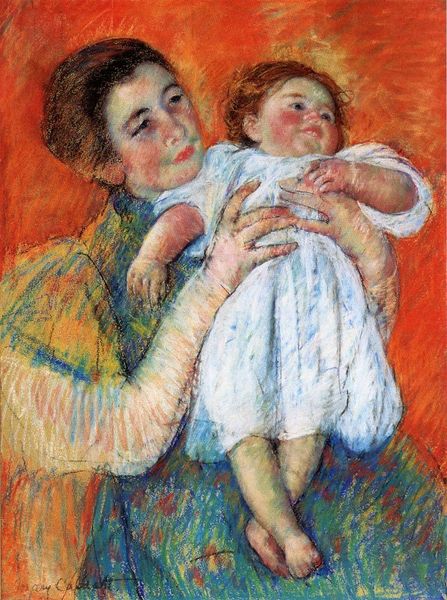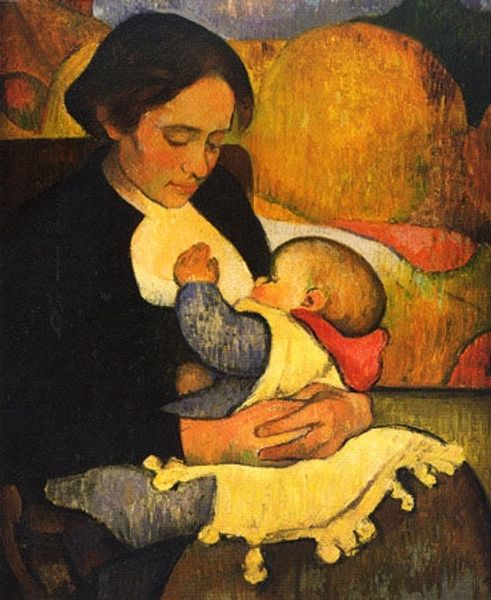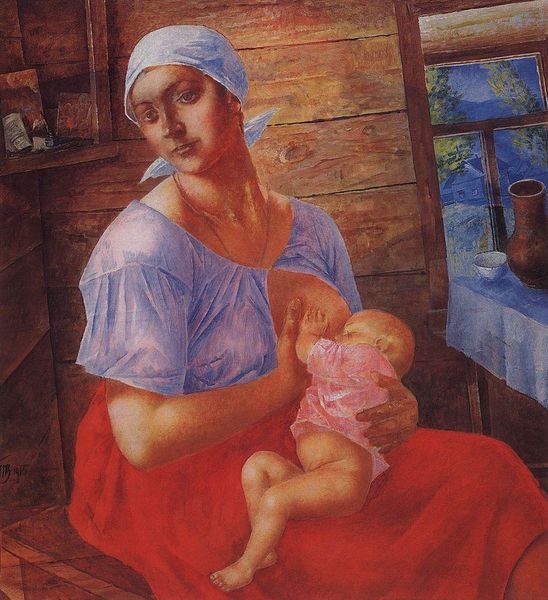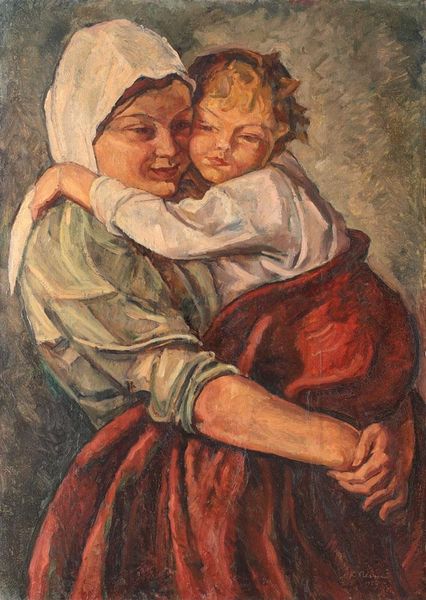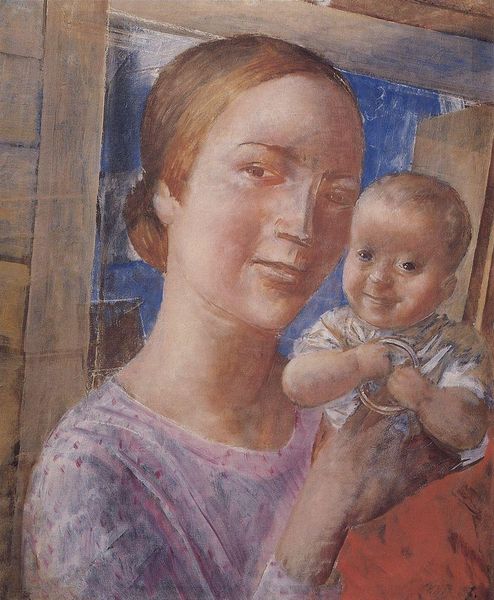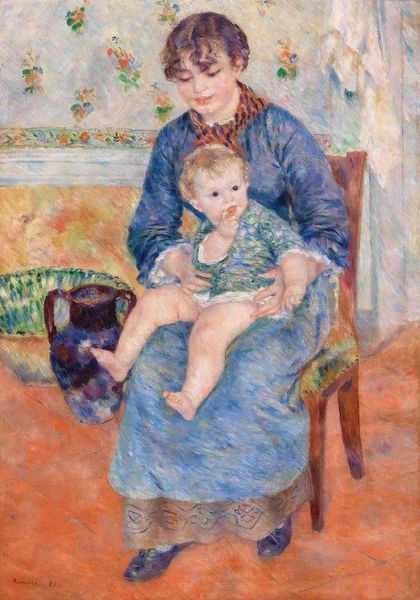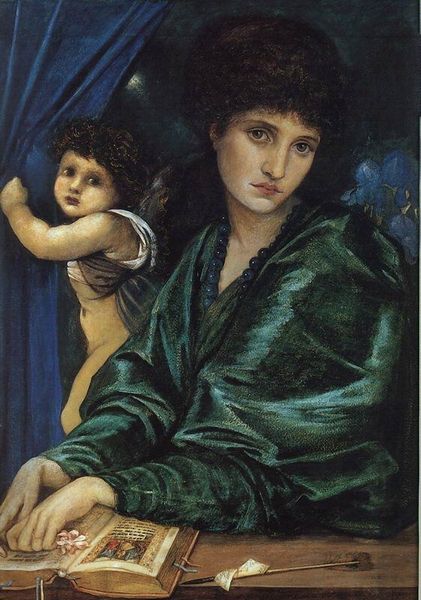
Copyright: Public domain US
Editor: Zinaida Serebriakova’s “Nurse with Baby,” painted in 1912, uses oil on canvas to capture a tender scene. There's such a calm and directness to the mother’s gaze. How do you interpret this work, especially considering its historical context? Curator: What strikes me is how Serebriakova portrays motherhood, avoiding idealization. Her work invites a powerful discourse, wouldn't you agree? Consider the historical period: the pre-revolutionary era in Russia. Traditional roles of women, particularly motherhood, were highly romanticized. Yet, here is Serebriakova presenting us with a more grounded reality. It almost has shades of realism while at the same time there's hints of Impressionism at play. Editor: That makes a lot of sense. The nurse’s calm and focused expression feels very real. So you think this deviates from, perhaps, what the Academy would’ve been supporting? Curator: Precisely. It speaks volumes about Serebriakova’s individual vision. She captures not only the nurturing aspect but also, perhaps, the physical demands, the unwavering attentiveness. It invites us to acknowledge the lived experiences of women beyond societal expectations, wouldn't you say? Editor: I agree. Seeing it within that framework shifts my understanding of the image. It’s no longer just a sentimental portrait, but a subtle assertion of a woman's experience. Curator: Absolutely, and that's where the activist dimension enters in. Serebriakova's realistic representation challenges preconceived notions and celebrates a different kind of womanhood and asks, are we ready to recognize this strength as more than just the physical manifestation of life-giving? Editor: I'll definitely look at it with new eyes now. It is way more than just realism. It feels groundbreaking. Curator: Indeed! These intimate moments can become a form of silent but profound social commentary.
Comments
No comments
Be the first to comment and join the conversation on the ultimate creative platform.

